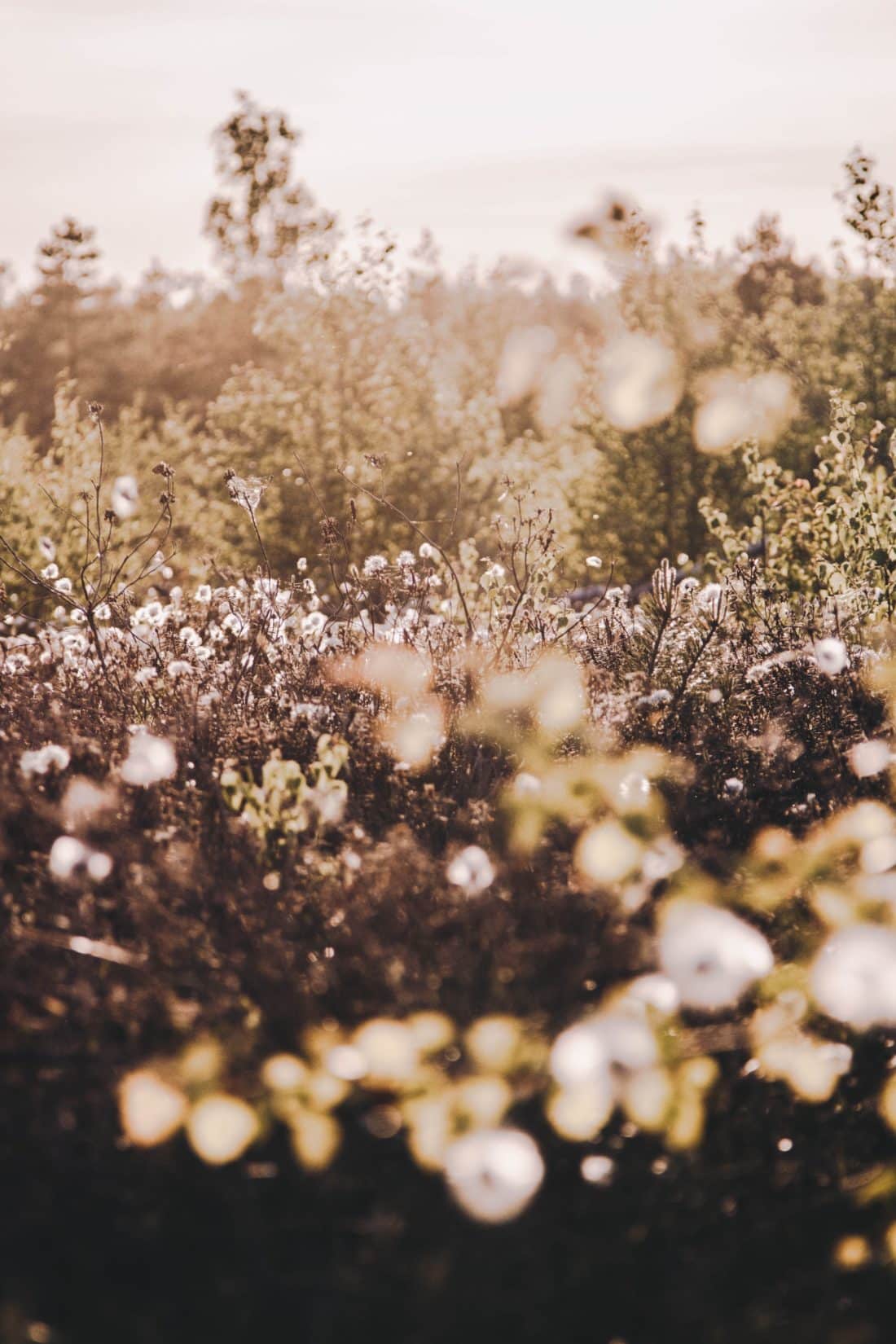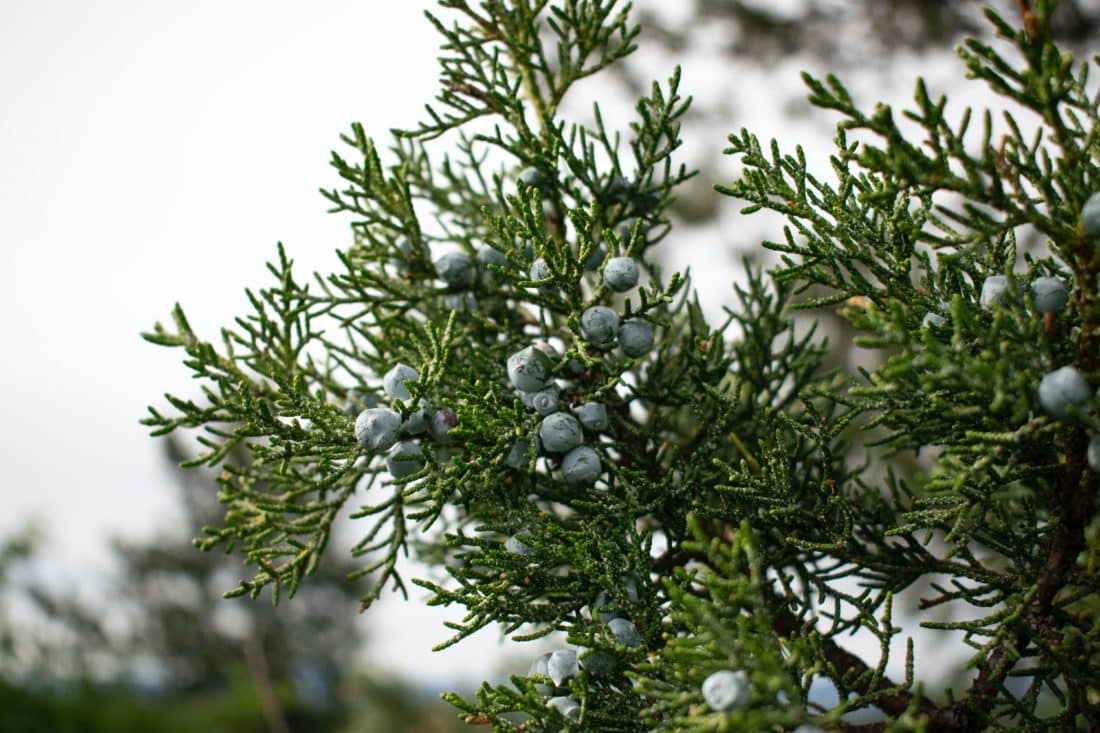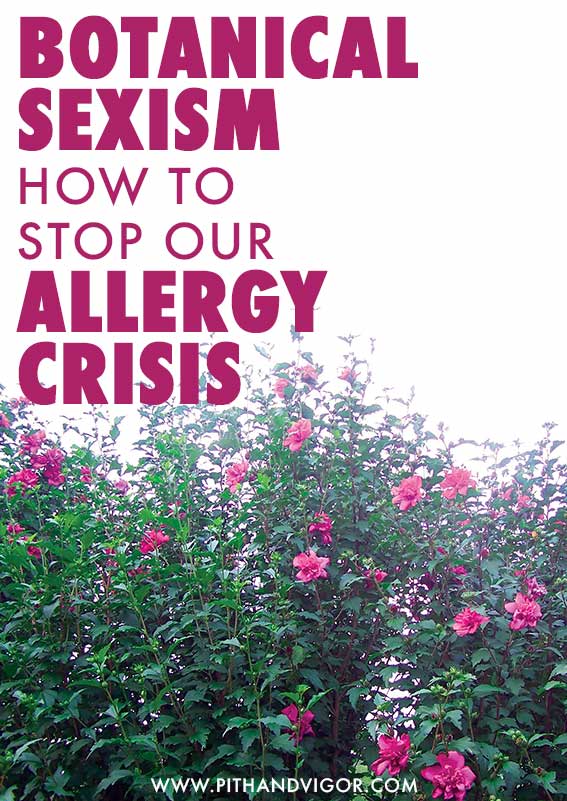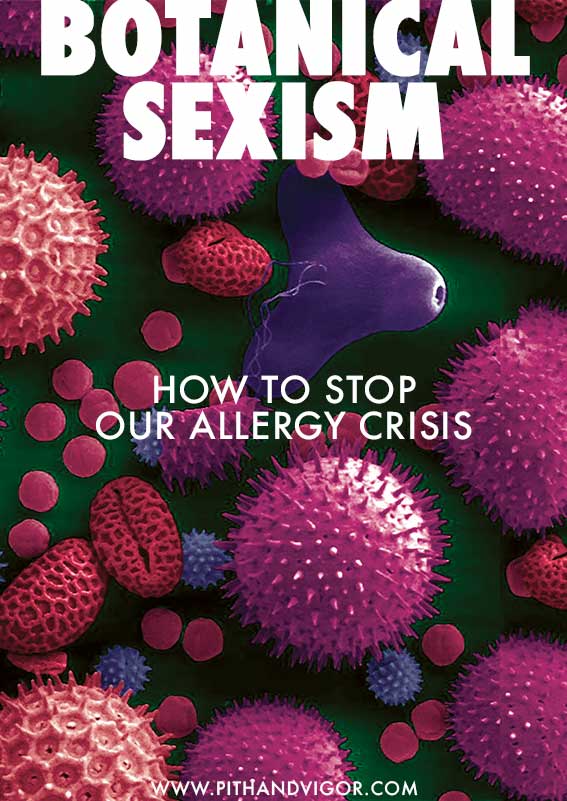Spring is one of the biggest allergy seasons but do you know why? It’s botanical sexism.
Many people have pollen allergies of one sort or another and as trees and plants begin to bloom, pollen counts spike. But if you think it has been worse than you once remembered it, you are aren’t wrong.
Why do we suffer so much more than generations of people before us?

It isn’t in your imagination that more people than ever have allergies and related asthma. There is a reason – Botanical Sexism.
Thomas Ogren’s research is at an eye-opening intersection of horticulture and the values that underlie our actual culture. I suffer from allergies (dust and rodents are my issue). I know the difficulty constant nagging sickness and breathing issues can cause.
Thomas Ogren explains why and how to begin to reverse our current allergy crisis as well as improve the health of our surroundings.
Like so many environmental issues, we’ve created this problem ourselves. With a little bit of value shifting and acknowledgment of our errors, we are the ones who can fix it.
Read on…
– Rochelle
Botanical Sexism: How to Put A Stop To Our Current Allergy Crisis
Back in the 70s, some doctors believed asthma and allergies weren’t medical conditions. Rather, they were psychosomatic illnesses that existed largely in the minds of ‘hysterical’ women.
This posed a dilemma for me as my partner suffered from both. And, truth be told, there were times I believed the doctors over my wife. It would be at least a decade of working as a landscaper and horticulturist before I began to see patterns in the profound effects that various plants had on some people.
For a while, I also had a regular job teaching horticulture and landscape gardening in a maximum-security prison. Curious about some of my theories, I enlisted the inmates to sniff-test pansies, dianthus and variety of other plants in the garden so that I could observe any reaction. Some plants had no effect on anyone. But others – like bottlebrush – caused immediate irritation and sneezing in over a third of the group.
My first hand experiences made me suspicious of the prevailing medical view and I wondered if there were some plants that allergy sufferers could – and should– avoid. For years I studied the connection between landscape plants and allergies. I eventually became particularly interested in the dioecious (separate -sexed) plants. Primarily because the male versions of the is class of plants were often highly associated with allergy.
Dioecious Plants are at the root of the Allergy problem
In nature, there is generally a balance of male and female plants in any species. But, since the 1940s breeders, arborists and consumers have favored male trees having been sold on the idea of trees and plants that are less ‘messy.’ Fruits, seeds and pods are shed from many female trees, so a campaign to plant predominantly male trees has been carried out for over a half century.
Even the USDA, in a 1949 yearbook of guidelines, advocated avoiding female trees. “When used for street plantings, only male trees should be selected, to avoid the nuisance from the seed.” The result is that pollen counts – due to botanical sexism – in urban and suburban areas are dramatically higher than they once were”.
If a tree or a bush is female, that means it doesn’t have any male parts; it doesn’t have any stamens; and it doesn’t make any pollen – that is the job of the male counterpart. Additionally, female plants trap pollen from male plants making them not only hypo-allergenic for people with pollen allergies, but they actually reduce pollen counts. Too many male trees and not enough female trees, particularly in cities and suburbs, has lead to a huge rise in pollen counts in populated areas.
If a tree or a bush is female, that means it doesn’t have any male parts; it doesn’t have any stamens; and it doesn’t make any pollen – that is the job of the male counterpart. Additionally, female plants trap pollen from male plants making them not only hypo-allergenic for people with pollen allergies, but they actually reduce pollen counts. Too many male trees and not enough female trees, particularly in cities and suburbs, has lead to a huge rise in pollen counts in populated areas. As in all things, balance is important and imbalance has consequences.

Female juniper (with berries) has an OPALS rank = 1. Male Juniper (no berries) has an OPALS rank =10.
THE OGREN PLANT ALLERGY SCALE (OPALS®)
Through decades of research, I assembled a list of over 130 criteria that I now use to rank the allergy potential of any individual plant, or cultivar. The Ogren Plant Allergy Scale or OPALS ranks landscape plants on a 1-10 scale. One is allergy-free, and ten is the most allergenic.
Progress has been, and is still, being made, but there’s much more to do. Public health departments are now taking notice and some are advocating my work to help with asthma avoidance. Still, most people still don’t realize that what they plant in their yards can affect the health of their own families.
Many nursery staff don’t know plants are separate-sexed. And they don’t advise about how plants with different flower structures have the potential for causing human allergy.
Most planners don’t understand the allergy-causing potential of most male plants. Cities continue to plant highly allergic plants, and each year the numbers of those with allergy and asthma continue to climb. There is plenty of more work to do on all of this, and I welcome all questions and try to answer all emails from concerned gardeners.
-Thomas
Find more information about the link between botanical sexism and allergies at Thomas’s website, Allergy Free Gardening.
A full list of OPALS rankings for plants is found in Thomas Ogren’s books:
The Allergy-Fighting Garden: Stop Asthma and Allergies with Smart Landscaping and Allergy Free Gardening The Revolutionary Guide to Healthy Landscaping
Photos by Ralfs Blumbergs and caleb pudewell on Unsplash
Related Posts:
Beyond OPALS – 5 Easy and Practical Ways To Reduce Garden Allergens
Stop Allergies! How to Plant Pretty Protective Hedges.
Related Posts:
Beyond OPALS – 5 Easy and Practical Ways To Reduce Garden Allergens
Stop Allergies! How to Plant Pretty Protective Hedges.
Share this post:


comments +